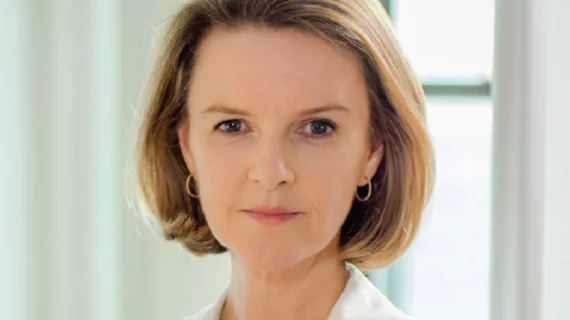Confronting COVID’s ‘brutal reality’ while plotting radiology’s post-pandemic future: 5 factors to watch
The light at the end of the COVID-19 tunnel might seem like a long way off. But regardless of your state’s current recovery phase, now is the time to start confronting the “brutal reality” and planning your radiology practice’s post-pandemic future for whenever the crisis may dissipate.
American College of Radiology President Geraldine McGinty, MD, MBA, detailed some such planning advice to her peers in a new opinion piece, published Monday in JACR. At her own institution, New York-based Weill Cornell Medicine, leaders last year identified five “impact factors” that are key to optimizing operations, regardless of the future. She believes this guidance transcends the pandemic and should help providers in any employment arrangement.
“Although nobody could have predicted the pandemic, those practices who anticipated future negative scenarios and planned for them will be best positioned to recover,” wrote McGinty and co-author Robert Min, MD, MBA, both with the Departments of Radiology and Population Science at Weill Cornell. “Although our practice experience as an academic medical center in an urban setting might not seem to translate to that of a small rural private practice, we believe that the need to plan for continued uncertainty combined with authentic transparent leadership is universally applicable,” they added later.
Here's a quick look at the five factors:
1) Reimbursement: Practice leaders would be wise to develop in-house financial expertise, establish reserves, connect with lenders, and build relationships with referrers to prepare for the next crisis. In the meantime, they must make difficult decisions about salary cuts, layoffs, reducing retirement contributions or health insurance options, and limiting new hires.
“Effective leaders will communicate these changes transparently and with empathy as they evolve, applying similar or even greater cuts to their own compensation,” the pair wrote.
2) Regulations: Similar to payment, McGinty and Min also urged practice leaders to form tighter relationships with lawmakers and insurers. They encouraged radiologists to get involved with both local and national societies and to help champion law changes that affect their businesses.
“Smaller practices should equally invest in professional society membership as well as develop even closer engagement with local lawmakers to influence policy. Across the practice spectrum, investment of physician volunteer time in advocacy activities is a critical survival strategy,” they wrote.
3) Replacement: This factor relates to the possible pushing aside of radiologists in favor of advanced-practice providers, artificial intelligence, or other innovations that could replace imaging. They believe the notion of the “invisible radiologist” has been proven untrue during the pandemic, and they simply encouraged colleagues to embrace these changes.
“Image interpretation will, we predict, continue to be supervised by radiologists but…successful practices will incorporate midlevel providers and machine learning tools to augment the productivity of the radiologist,” they wrote.
4) Research and education: Given some recent reports that the pandemic is having a larger impact on female radiologists, the writers suggested taking “active measures” to help women physicians “recover from this lag.” At Weill Cornell, they’ve “reset the tenure clock” by one year to help account for any decreased research productivity while radiologists grapple with childcare and other family duties.
Meanwhile, practices must determine ways to fill the education void, with countless in-person imaging conferences tabled in 2020 and possibly beyond. McGinty and Min suggested solutions such as structured processes to include more radiologists on committees and projects, along with a “virtual visiting professor” program that allows trainees to hear from external speakers.
5) Other factors:
Finally, ongoing protests following the death of George Floyd, spikes in COVID cases and weather events all mean that radiologists will likely be working remotely for the foreseeable future.
“Future departmental planning will need to account for the potential need to continue significant homeworking and to double down on redundancy and data security,” the team advised.
Read more advice from McGinty and Min in their Journal of the American College of Radiology here.

